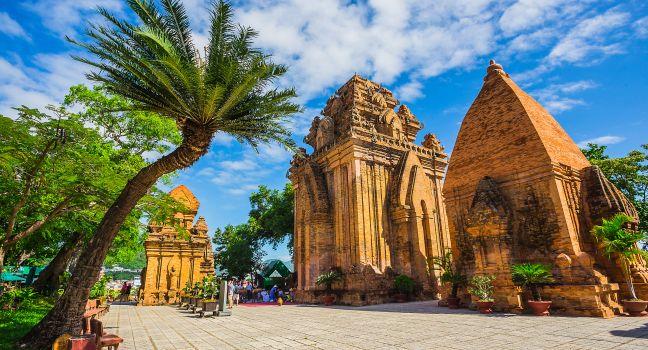Considered one of Vietnam's most important Buddhist sites, the Perfume Pagoda (Chua Huong) is the largest of a cluster of shrines carved into the limestone of the Huong Tich Mountains. In late spring the trails leading up to the shrines are clogged with thousands making their pilgrimage to pray to Quan Am, the goddess of mercy and compassion.
According to a Vietnamese version of the Chinese legend, Quan Am was a young wife falsely accused of trying to kill her newlywed husband. Thrown out of her mother-in-law's house, she took refuge in a monastery, posing as a monk. A reckless girl one day blamed her pregnancy on the monk, not knowing he was a she. Without a word of self-defense, the vilified monk took the child in and raised him. Only after Quan Am died did villagers discover her silent sacrifice. In the past, pilgrims came to the grottoes to pray for Quan Am's help in bearing sons and in fighting unjust accusations.
From the shores of the Yen River, you are ferried to the site, 4 km (2½ miles) away, on sampans that seem to be made of flimsy aluminum. It's a spectacular ride through the flooded valley, past boats laden with fruit and farmers at work in their fields. You'll be let off at Chua Tien Chu. From there, follow a stone path uphill to the various pagodas and shrines. Three kilometers (2 miles) later you'll reach the Perfume Pagoda. A steep set of stairs takes you inside the impressive cavern, where gilded Buddhas and bodhisattvas sit nestled in rocky recesses. The air is misty from incense and the cooking fires of the Buddhist monks who tend the shrines.
In early spring, from just after Tet to the middle of the second lunar month, thousands of Buddhists make their pilgrimage to the Perfume Pagoda. This is an intense—and sometimes stressful—time to visit as the crowds of Vietnamese faithful clog the Yen River with extra boats and make navigating the slippery stairs more of an exercise in caution than a journey of discovery. The atmosphere at this time of year is positively electric with thousands of Buddhists crowding into the cavern to leave offerings, catch a droplet of water from a holy stalactite, or buy Buddhist trinkets and mementos from the dozens of stall owners. Note that the climb up to the pagoda can be rough going, especially when it's muddy, and that local operators sometimes lead the climb at a very fast pace. Be careful of independent tourist agents—many have been known to take unsuspecting travelers to a smaller pagoda closer to Hanoi and tell them it's the Perfume Pagoda. Also, it's unwise to attempt this trip on your own as you will most likely be overcharged.




